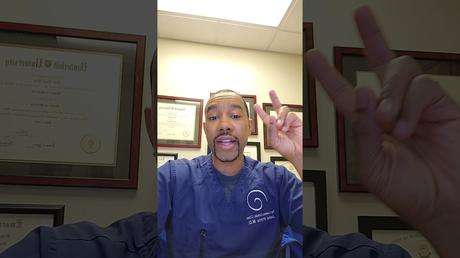
Dr. Pitts Talks About PRP for UCL Injury as an Alternative to Tommy John Surgery
Transcript
Hi everybody. This is Dr. John Pitts with the Centeno-Schultz Clinic, where we lead and invented much of the field of Interventional Orthopedics and regenerative medicine. Mainly we treat most musculoskeletal and orthopedic problems with injections of your own healing factors that can get your tissue to heal itself rather than using drugs and surgeries that are often either short term fixes or have a lot of complications or side effects.
And so a common misconception is that the things that we do don’t have a lot of evidence to support it. And while this is a new field, we’re the leaders in this field and we’ve been doing it for 16 years. Our clinic itself has published 30 papers in this field. And every week, there are many, many papers published on stem cells and PRP, both clinical and lab research-wise.
I’d like to use some of these videos to talk about some of those specific studies. And so one problem which is special to me because it was the very first problem I had that was treated with PRP when I first started learning about this field when I first came to Centeno-Schultz Clinic, and that’s a UCL injury. So UCL stands for the ulnar collateral ligament. That’s the ligament on the inner part of your elbow. This is most commonly associated with pitchers or throwing athletes. So that motion of pitching where you stretch that arm back and bring it back can injure this ligament. I actually played baseball but didn’t injure it with that. I injured it probably working out lifting weights, so it was bothering me with pull ups. And great Dr. Schultz did some PRP into that area, and after four months it was 99% improved, and after another month I didn’t even recognize that I ever had a problem with it and have never had an issue with it since.
So this particular study is looking at, in throwing athletes, how effective was PRP for treating UCL injuries? Because this is the type of injury where you have a partial tear or a full tear that requires that Tommy John Surgery, where pitchers are out for about a year, and then they can maybe come back and last another couple years, and then usually their career is done. So, it’s a major thing if you can avoid that particular surgery.
And so just one, just looking back at some of the previous research, there was a study back in 2016. About 44 baseball players who failed conservative things like physical therapy, rest, and anti-inflammatory meds, 73% of those responded to PRP and were able to get back to return to sports without any surgeries. Another study showed an 88% return to sports just in three months after doing PRP, versus surgery did have about a 90% return to sport rate as well, but it took nine to 12 months. So we’re talking three to four times faster with PRP and similar success rates. And if you look at three studies combined previously, anywhere between 73 and 96% returned to sports using PRP, shorter duration of time, no surgery, which is quite remarkable.
And so this study wanted to pull out the little details as to what type of injuries may respond. Because just having a UCL injury is not specific. You can have what’s called a grade 1 injury where there’s some small partial tears, a grade 2 injury where there’s some larger partial tears, a grade 3 injury where there’s a complete tear of the ligament, and then grade 4 is where you have maybe two areas where there are some large tears of the ligament. So obviously the worse the tears, suspected maybe harder to treat with something like PRP.
And, so they used a PRP that was nine times your baseline concentration, which is pretty good. This particular one had leukocytes or white blood cells, which can cause a little bit more inflammation. Maybe not as important for tendons and ligaments, but we like to get rid of those so it kind of limits the inflammation afterwards. And then they took about 50 folks, looked at the records of when they had PRP for these types of injuries, graded the type of tear that they had to see how well PRP worked.
So essentially overall, about 60% of folks had return to play with PRP for all tears. But if you break that down into the type of tear, if they were a type 1, a type 2 tear, they had about a 78% success rate. So if it was a smaller injury, PRP seemed to work pretty well for most athletes, didn’t require surgeries. A few maybe needed a second PRP shot, but that was it. If it was a type 3 tear, then more of those folks required surgery. And the group of more than tears and of the type 4 injuries, only one out of eight of those patients had success with PRP.
So based on this study and our own experience, we find that the smaller tears do much better with PRP. For us, we get better results with the maybe type 3 tears with bone marrow concentrate. That works a lot better for those injuries in type 3 and type 4. So we wouldn’t particularly use PRP for those type of tears because of our clinical experience. We would use more bone marrow concentrate which contains stem cells. And then in the rare cases where the tear’s maybe just too large, maybe go to surgery. Or if they failed PRP or bone marrow concentrate, they would go to surgery as well. So this study basically showed that smaller tears did better with PRP as you’d expect, and larger ones were a little more difficult to treat. And again for us, we use bone marrow concentrate for those larger tears which seems to work well. So we just need to wait and get some more published literature in the area.
So, I just had a recent baseball player who was a young guy, a pitcher. He had a UCL injury. His was more of a grade 2 injury. We did PRP on him, and within two months he was back playing baseball 100% doing well. So, these things do help. My own injury healed up quite nicely. It was my left elbow. And I wasn’t a throwing athlete, but it cured everything without any further complication. So if you or anyone you know is having elbow problems, been diagnosed with a UCL injury or any other musculoskeletal or orthopedic injury and looking to avoid drugs and surgeries and want to try to get your body to heal itself, we’re the experts so give us a call and see if we can help you, and if you’re a candidate for therapy. You guys take care. Have a good day.
References for “PRP for UCL Injury”
Mills FB 4th, Misra AK, Goyeneche N, Hackel JG, Andrews JR, Joyner PW. Return to Play After Platelet-Rich Plasma Injection for Elbow UCL Injury: Outcomes Based on Injury Severity. Orthop J Sports Med. 2021 Mar 17;9(3):2325967121991135. doi: 10.1177/2325967121991135. PMID: 33796592; PMCID: PMC7983438.

